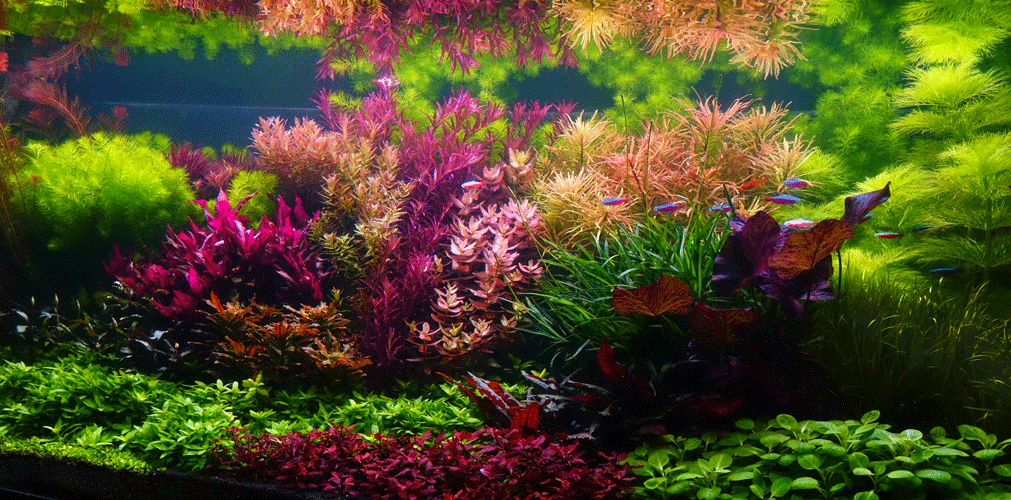Product added to cart
- Home
- Pure Water Blog
- The Benefits of RO Water for Aquarium Plants: An In-Depth Analysis
The Benefits of RO Water for Aquarium Plants: An In-Depth Analysis

When it comes to maintaining a thriving aquarium, water quality plays a critical role, particularly for the health and growth of aquarium plants. One popular option for ensuring optimal water conditions is the use of Reverse Osmosis (RO) water. In this blog post, we will explore the advantages of using RO water for aquarium plants and how it can contribute to their overall well-being.
- Understanding RO Water
Reverse Osmosis is a water purification process that removes impurities and contaminants by passing water through a semi-permeable membrane. This method effectively eliminates substances like chlorine, chloramines, heavy metals, nitrates, phosphates, and other pollutants that can negatively impact the aquarium ecosystem.
- Optimal Water Parameters
Aquarium plants require specific water parameters to flourish, including pH levels, hardness, and mineral content. Tap water often contains high levels of dissolved minerals, which can lead to imbalanced conditions and hinder plant growth. RO water, on the other hand, provides a blank canvas for aquarists to customize the water parameters to suit the specific needs of their plants.
- Reduced Algae Growth
Algae growth is a common concern for aquarium enthusiasts. Excessive algae can deprive plants of essential nutrients and hinder their growth. RO water helps to minimize algae growth by removing the nutrients that fuel its development, such as phosphates and nitrates. By using RO water, you can create an environment that promotes healthy plant growth while keeping algae at bay.
- Controlling Nutrient Levels
Aquarium plants require a delicate balance of nutrients for optimal growth. Tap water often contains high levels of dissolved nutrients, which can lead to an overabundance and imbalance in the aquarium. RO water allows aquarists to have precise control over the nutrient levels by adding specific fertilizers and supplements tailored to the plants' requirements. This level of control ensures that the plants receive the right amount of nutrients without risking nutrient deficiencies or excesses.
- Preventing Toxic Substances
Municipal water sources may contain traces of chemicals like chlorine and chloramines, which are used to disinfect the water. Although necessary for human consumption, these substances can harm sensitive aquarium plants. RO water removes chlorine and chloramines, ensuring that the plants are not exposed to potentially toxic substances. This significantly reduces the risk of plant damage and promotes overall plant health.
- pH Stability
Some tap water sources have fluctuating pH levels, which can stress aquarium plants. RO water has a neutral pH, allowing aquarists to maintain stable and consistent pH conditions. This stability helps plants adapt better and minimizes stress, promoting healthy growth.
Conclusion
Using Reverse Osmosis (RO) water for your aquarium plants offers numerous benefits that can contribute to their overall health and growth. The removal of impurities, control over water parameters, reduction of algae growth, precise nutrient control, prevention of toxic substances, and pH stability all work together to create an optimal environment for your plants to thrive.
By incorporating RO water into your aquarium maintenance routine, you can ensure that your plants receive the best possible care and enjoy a flourishing aquatic environment. Always remember to test and monitor water parameters regularly to make adjustments as needed. With the right attention to detail and a commitment to water quality, your aquarium plants will reward you with vibrant, lush displays for years to come.
Recent Posts
February 02, 2024
What's the Normal TDS for Drinking Water?
February 02, 2024
Unveiling the Most Accurate TDS Meter: Your Guide to Crystal-Clear Water Testing (2024 Update)
October 21, 2023
NPT vs. BSP Thread Types and Dimensions: A Comprehensive Guide
Archive
Tags
water purification
reverse osmosis
water filtration
water quality
drinking water
water contaminants
water treatment
clean water
RO system
water pressure
post-filter
safe drinking water
TDS meter
home water filtration
Total Dissolved Solids
clean drinking water
Water filtration systems
water filter
filter change
home appliances
household water
safe water
impurities
bacteria
pre-filter
filter efficiency
filter maintenance
filter replacement.
RO filters
sediment filter
carbon filter
reverse osmosis membrane
UV sterilization
waterborne pathogens
domestic reverse osmosis system
production rates
RO membrane
reverse osmosis systems
contaminants removal
fluoride removal
health
What filter removes 100% fluoride
How do you remove fluoride from tap water UK
Can fluoride be removed from tap water
How is fluoride removed
does boiling water remove fluoride
Fluoride removal from water
fluoride free water uk
fluoride removal filter
water filters that remove fluoride and chlorine uk